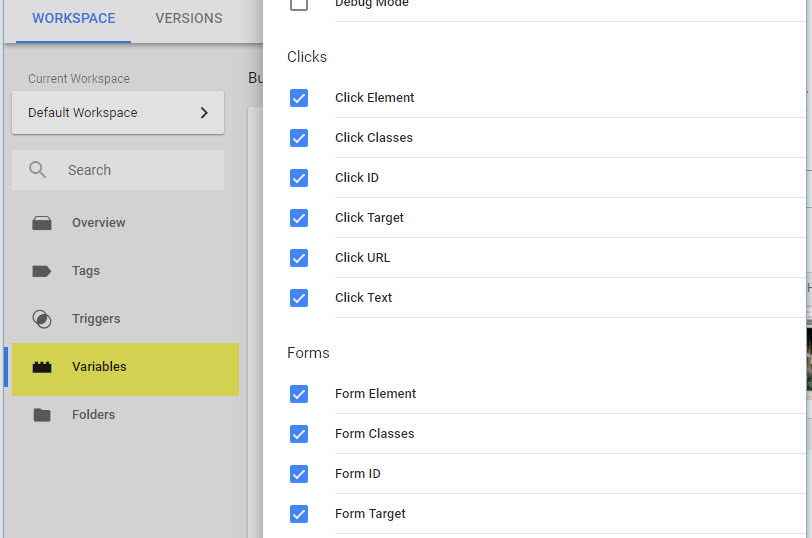The Ultimate Guide To Google Analytics Event Tracking
5 Simple Techniques For Google Analytics Event Tracking
Table of Contents7 Simple Techniques For Google Analytics Event Tracking6 Simple Techniques For Google Analytics Event TrackingThe Best Strategy To Use For Google Analytics Event TrackingThe Best Strategy To Use For Google Analytics Event TrackingNot known Details About Google Analytics Event Tracking The Ultimate Guide To Google Analytics Event Tracking

If you're going to establish event monitoring manually, then you're going to need to add some extra code to the components you desire to accumulate data from. The code you're mosting likely to collaborate with will certainly look something such as this: There are four components within that code snippet that you're going to need to specify on your own: occasion, Group, event, Activity, occasion, Tag and event, Worth.
As you can see, 2 of these are required (classification and action) while label and worth are optional. Everything relies on the sort of info you want relayed back to Google Analytics when a user clicks on the specified element (Google Analytics Event Tracking). It will certainly be a lot easier to specify these elements if you analyse your website and decide which elements/actions you wish to track
The Basic Principles Of Google Analytics Event Tracking
Currently, you'll be asked to define the and and you'll desire to choose from the drop-down food selection that appears when you click. This will raise the exact same occasion tracking elements we took a look at earlier, which you'll require to complete. As soon as you've defined these, you can move down to the second box and pick the trigger that will terminate your tag.
On the next screen, you'll additionally have a field for calling your trigger and, if you click the box, you'll see a listing of the different triggers you can choose. In this instance, we want to choose and after that select the choice listed below. You'll establish the trigger to only discharge when an element is clicked with an URL that consists of the.
Simple - Occasion monitoring! Occasion monitoring offers you a photo of exactly how individuals engage with your web site and service. Check out on as we check out everything you need to know, including what it is, why you must track events, how to take care of occasions data, and other pertinent Frequently asked questions you may have.
Unknown Facts About Google Analytics Event Tracking
You can switch in between your occasion classifications, activities, and labels in the Leading Events report. The Occasion Pages report shows the web pages where occasions are triggered.
It reveals you the course they take as they move from one event to the following and assists you to determine which material involves your target market one of the most. Occasions in Google Analytics have four primary components. They are also a part of the occasion tracking code. Google Analytics utilizes these codes to track individual communications and group them into occasion records.
After that, select "Variables" > "Configure". A list of the specifications you can track on your internet site is on the right. Under Clicks, Forms, and Videos, double-check each criterion. After examining all necessary fields, you can click "X" to shut the window and return to the Summary menu on the left.
Our Google Analytics Event Tracking Ideas

Picking "False" will certainly stop that session from being a bounce. If you have not done so, you may require to establish up a variable in the Google Analytics Settings box. Click "New Variable ..." if you can't locate one to select. After this, look at here now enter your GA monitoring ID in the Tracking ID area.
To do this, adhere to the next collection of actions: After setting up the areas, select the "Triggering" area. When configuring your new trigger, click the "+" switch, after that the "pencil" button, after that choose your trigger type.
The Single Strategy To Use For Google Analytics Event Tracking

When it comes to recognizing which areas and aspects are directing clients with your conversion funnel, you still won't understand. So, without event tracking, GA reports will only count gos to as single-page sessions, even if individuals spend a great deal of time on one web page and engage with it considerably (and a bounce).
However exactly how does occasion tracking achieve this?Single-page sessions called bounces begin and wrap up on the exact same web page. Without event monitoring, GA will identify a customer's visit as a bounce if they don't navigate to an additional page, no matter of exactly how they communicate with go to this site it. A video-rich page can have a greater bounce rate if events are not tracked.
More About Google Analytics Event Tracking
For GA to take occasion hits right into account when measuring bounce rates, you need to pick "Non-interaction event" as "False" during anchor the GTM arrangement. Establishing "occasion goals" with event activity is an excellent method to monitor customer tasks you value extremely, such as brand-new lead entries or click a phone call to action.